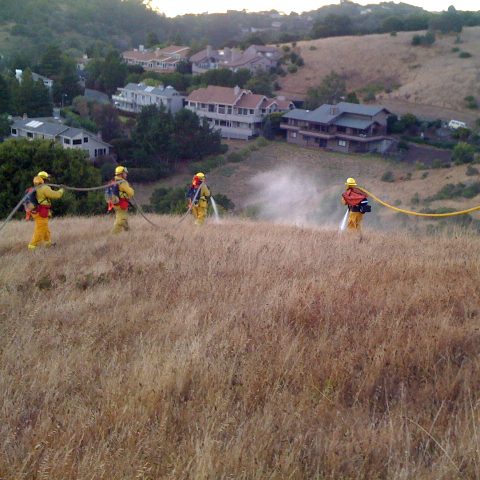 Pictures from the Los Angeles wildland fires that show the smoldering remains of homes that once filled an Altadena subdivision are reminders that it can happen here.
Pictures from the Los Angeles wildland fires that show the smoldering remains of homes that once filled an Altadena subdivision are reminders that it can happen here.
City of Mill Valley officials are focused on doing everything possible to prevent such a possibility.
Mill Valley plans to access $500,000 in fire prevention funds to begin work on a long-awaited safety buffer on its ridgelines.
The funds have been collected by the Marin Wildfire Prevention Authority. They now can be accessed because environmental permits have been obtained to clear vegetation in elevated areas, City Manager Todd Cusimano told the City Council on Monday. “The good news is the money is there,” Cusimano said.
The fuel break funds are in addition to $900,000 that the city had anticipated from the Marin Wildfire Prevention Authority in its budgeting for the fiscal year starting July 1.
“Let’s say we put $200,000 in for a project and for whatever reason we aren’t able to get through the environmental compliance process, we hold that $200,000 for the next fiscal year or when that compliance has been completed,” said Mark Brown, the executive officer of the wildfire agency.
“This fuel break is on the ridgeline of our highest danger zone and will protect our city,” said Cusimano. “It’s the first line of defense from a major fire.”
The wildfire agency was created by Measure C in 2020. The measure, which imposed a 10-year parcel tax to coordinate prevention efforts, raises $22 million annually for distribution to districts and municipalities.
Sixty percent of the funds are spent on major projects like hillside fire breaks. The balance is spent on home hardening and vegetation management. The wildfire agency reimburses municipalities annually for the residential efforts, Brown said.
Mill Valley is Marin County’s third most populous city and has about 6,600 homes. The state recently issued new fire risk maps, and compared to 2011, when the last maps were issued, Mill Valley’s highest risk areas are now more concentrated around Mount Tamalpais, according to Division Chief Fred Hilliard of the Southern Marin Fire Protection District. These are the hills and ridges targeted by the fuel break.
“We have a very robust program with the Marin Wildfire Prevention Authority, where we do a lot of projects of fire fuel removal and fire fuel reductions, and public education and inspections,” Hilliard said. “So we need to know where the state says, these are high priority areas that you should also be looking at.”
The state continues to impose fire-protection mandates for homeowners and municipalities, Hilliard said. Sellers of homes in risky areas must give prospective buyers fire inspection reports. Cities must update building standards to qualify for state fire-protection grants.
Hilliard said the state’s new fire maps do not influence decisions by insurers on who can obtain coverage. The insurers use other data.

